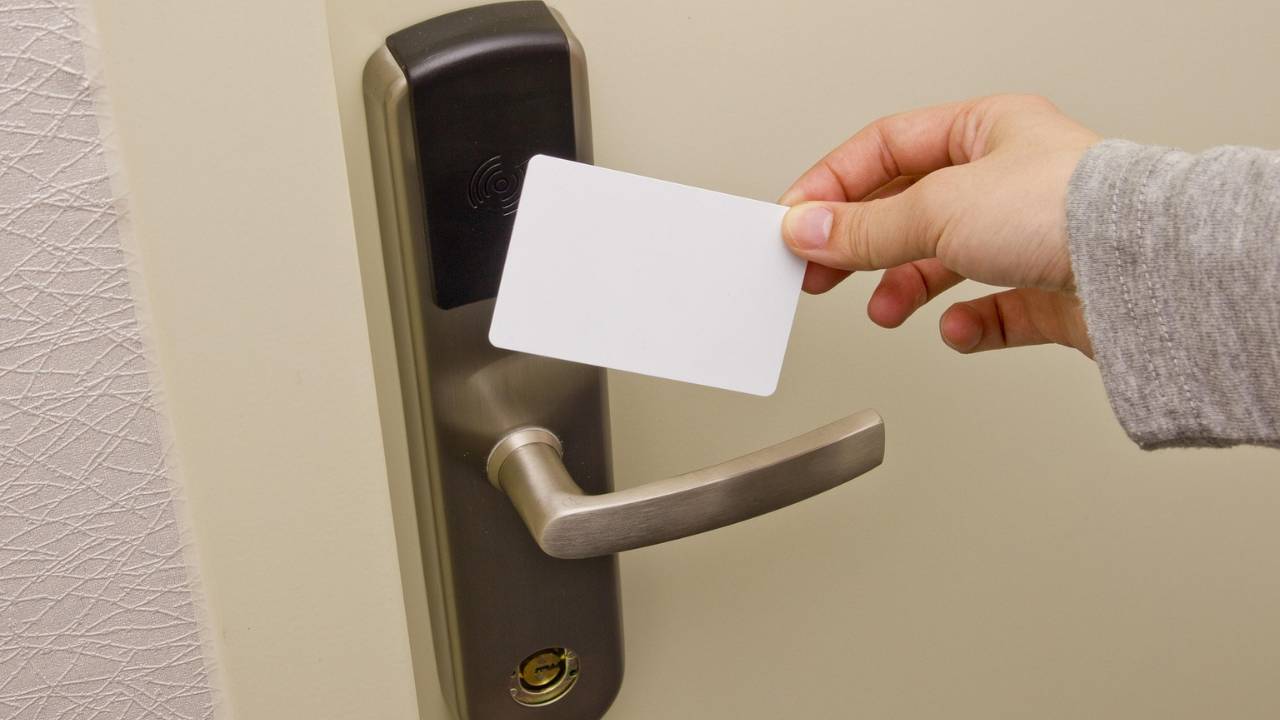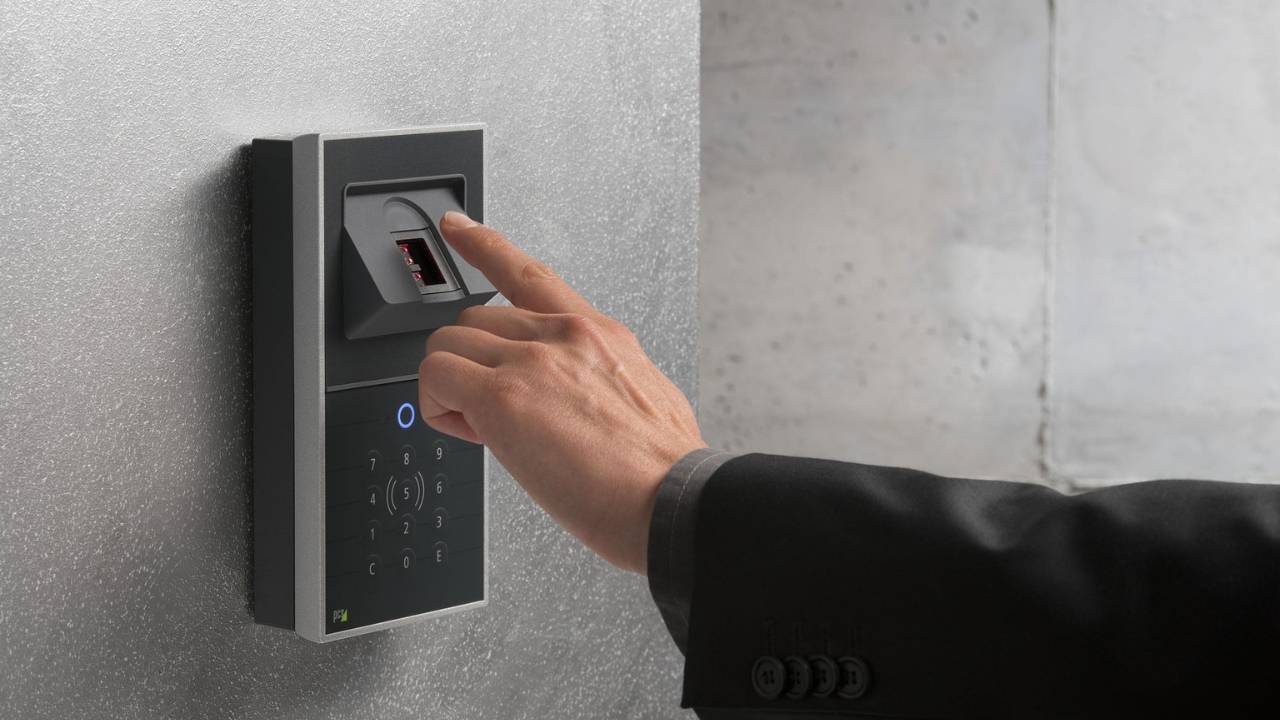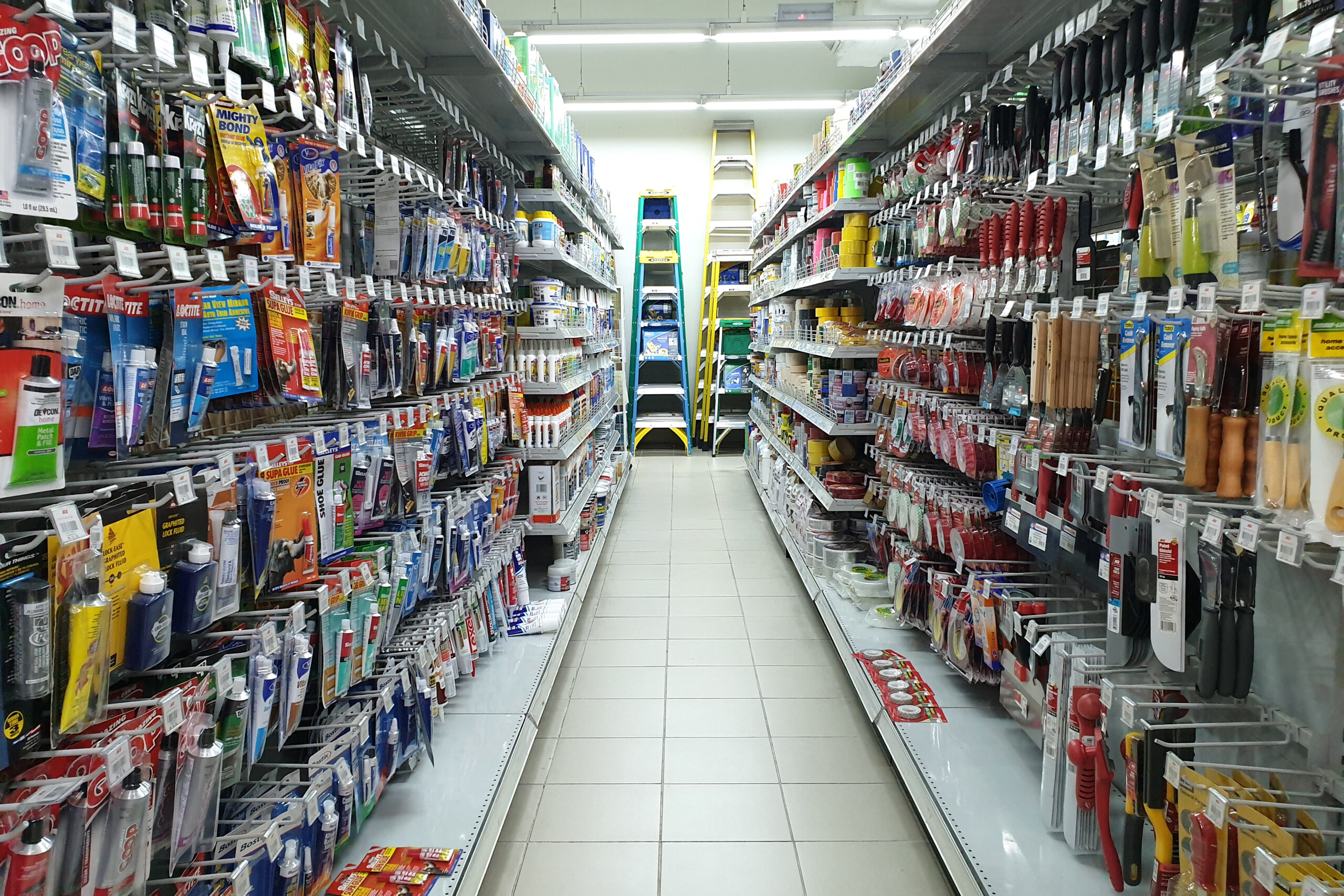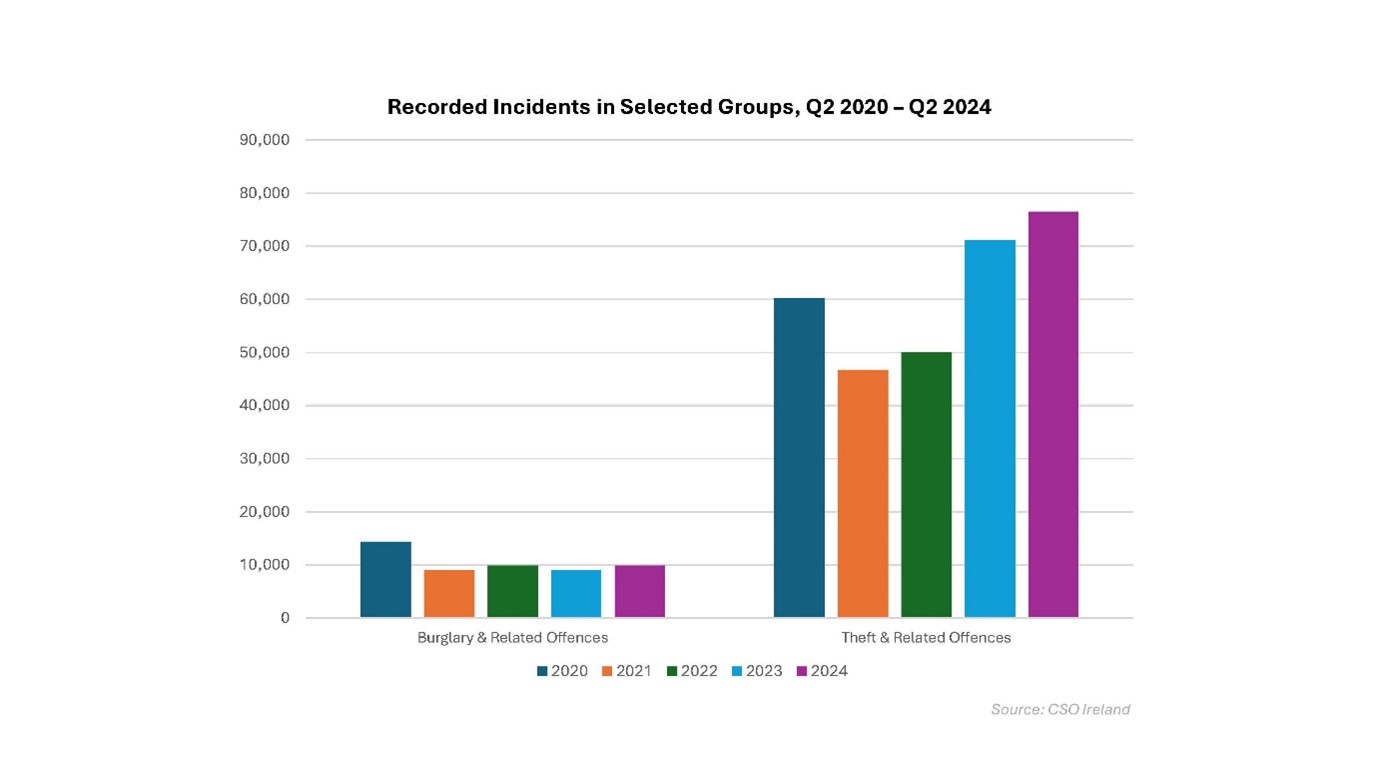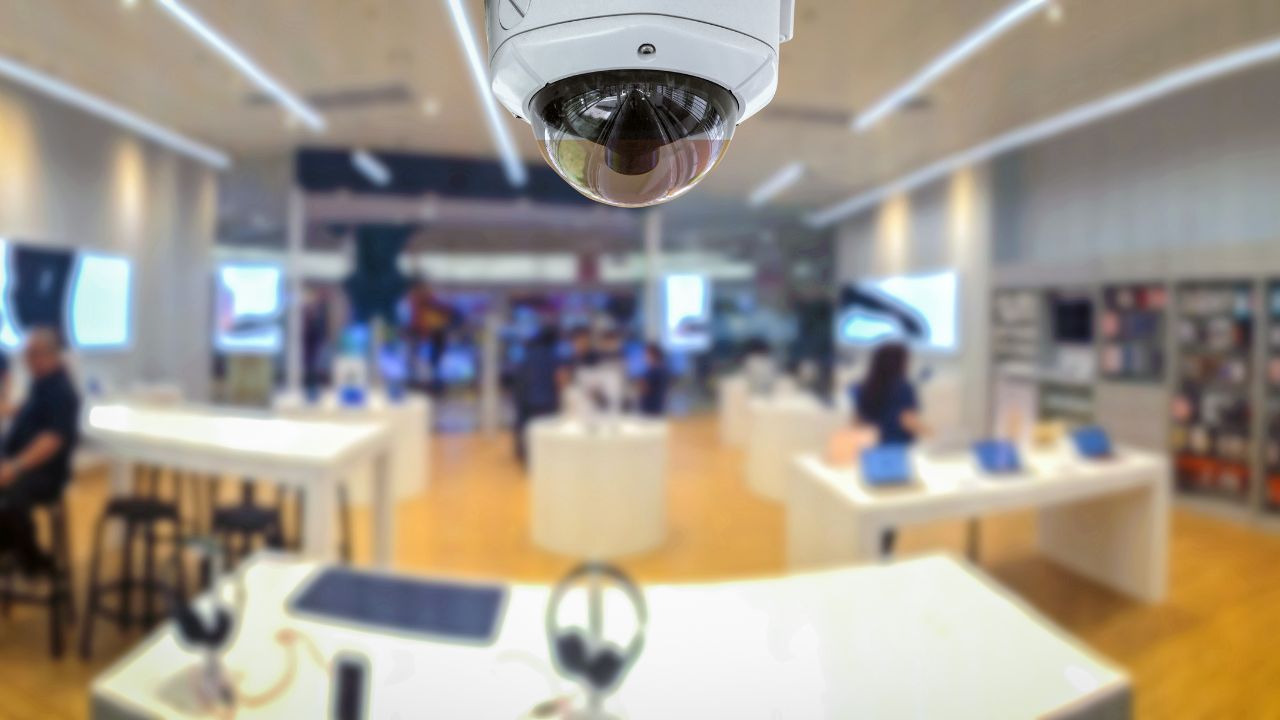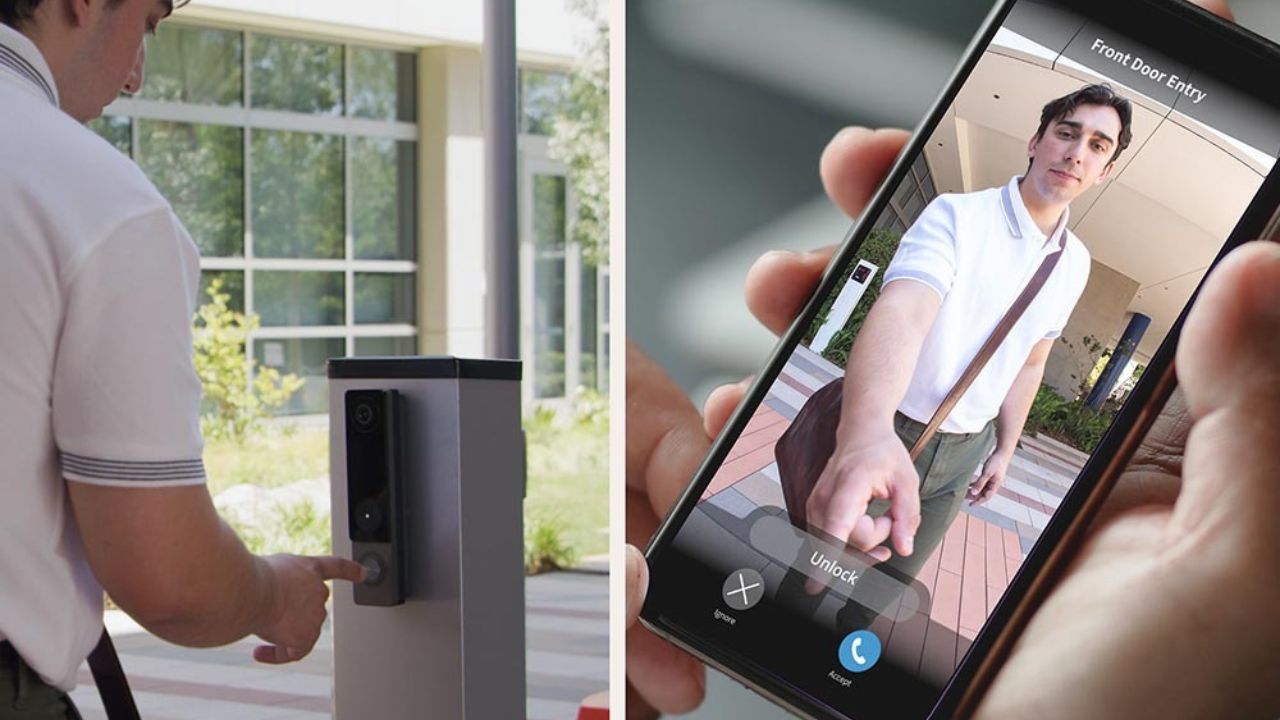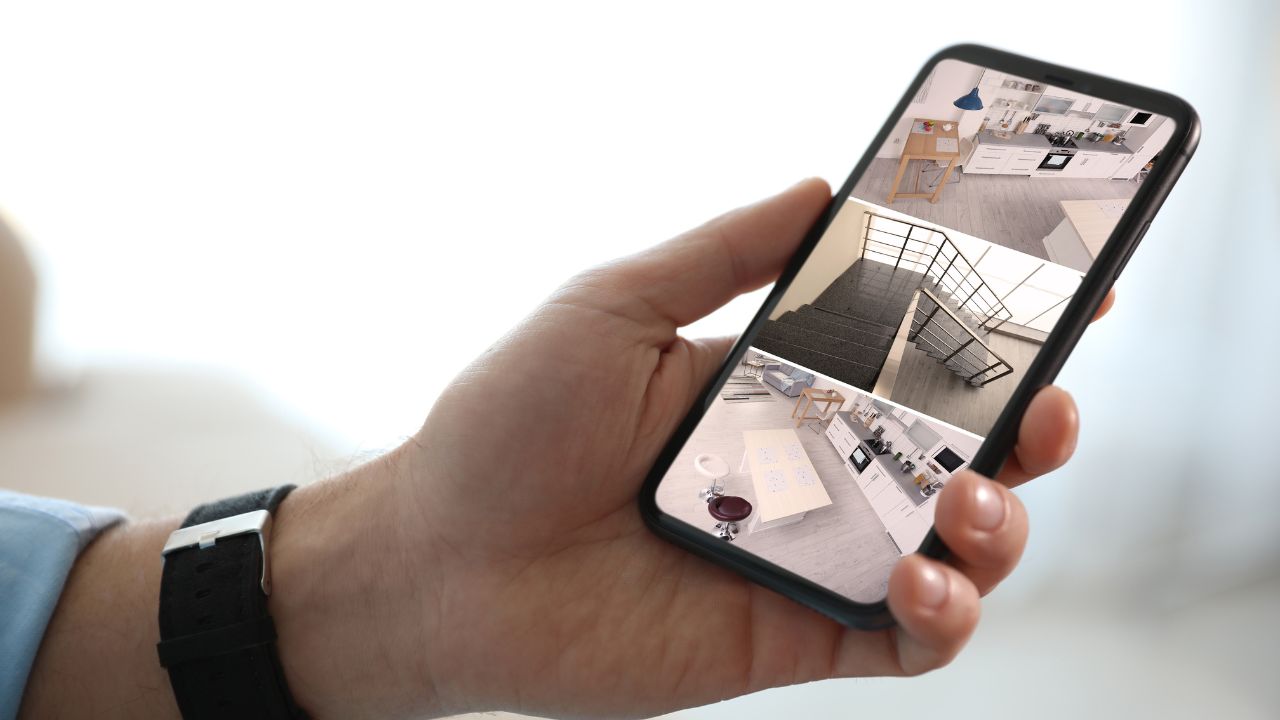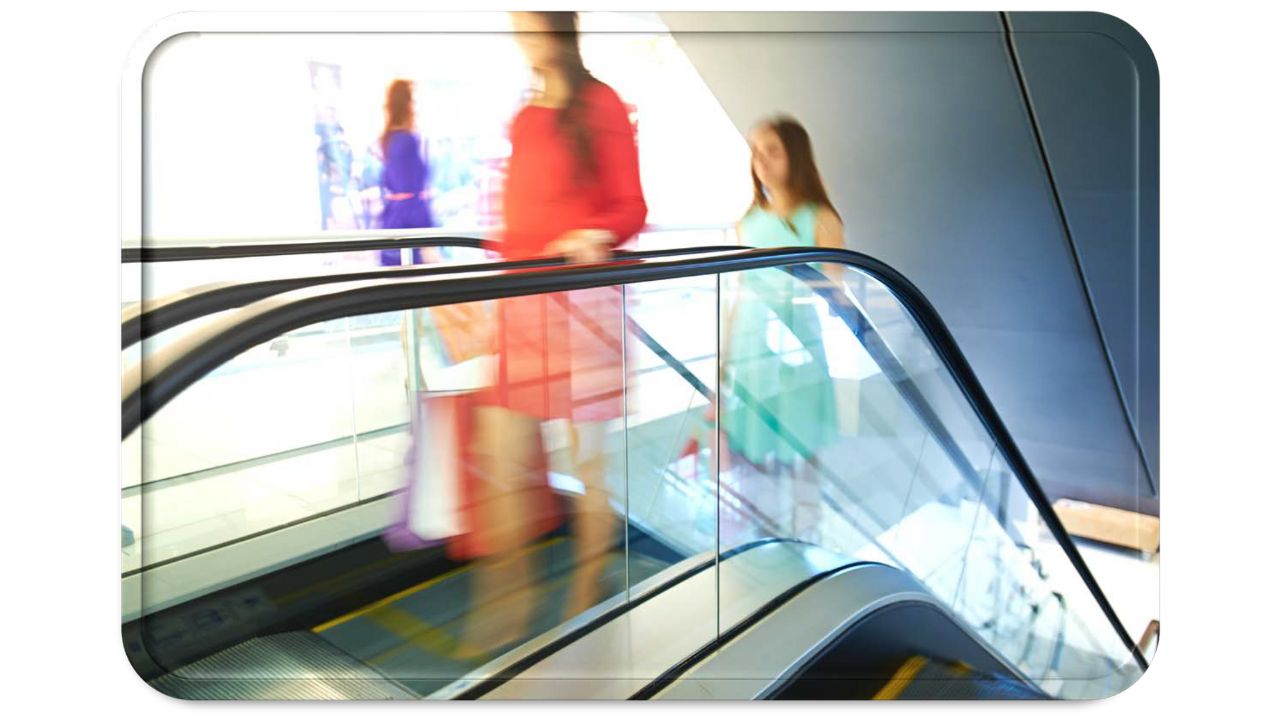Are your current security measures keeping pace with modern threats? Traditional locks have served us well for centuries, but in today’s rapidly evolving security landscape, they may not be enough to protect what matters most.
Automatic door access control systems represent a significant leap forward in security technology, offering unprecedented control, monitoring capabilities, and convenience that traditional locks simply can’t match. If you’re already considering upgrades, our complete guide to choosing the best access control system dives deep into system selection strategies.
But is upgrading the right choice for your situation? This comprehensive guide explores everything you need to know about automatic door access systems versus traditional locks, helping you make an informed decision about your security needs.
Understanding Traditional Locks
Traditional locking mechanisms have been the cornerstone of building security for generations. Before deciding to upgrade, it’s essential to understand what these conventional systems offer and where they fall short.
Types of Traditional Locks
When we talk about traditional locks, we’re referring to a range of mechanical and simple electronic locking systems:
- Mechanical locks: Including deadbolts, knob locks, and padlocks that use physical keys
- Electronic keypad locks: Simple code-based entry systems without network connectivity
- Combination locks: Requiring specific sequences of numbers or letters to unlock
Each of these systems has its place in security applications, but all share common limitations when compared to modern access control solutions. For commercial environments like retail, consider reading our article on retail security systems to see how access control integrates with wider security plans.
How Traditional Locks Work
Traditional locking mechanisms rely on relatively simple principles. In mechanical locks, a physical key aligns pins within the lock cylinder, allowing the lock to turn. Electronic keypad locks replace the physical key with a numeric code but still operate as standalone units.
These systems are straightforward, which contributes to their reliability—there are fewer complex components to fail. However, this simplicity is also their most significant limitation.
Advantages of Traditional Locks
Despite newer technologies emerging, traditional locks maintain several distinct advantages:
- Low initial costs: Generally more affordable upfront than electronic systems
- Simplicity and reliability: Less prone to technical failures and don’t require power
- Easy installation: Many can be installed without specialised knowledge
- Familiarity: Most users intuitively understand how to operate them
For smaller properties or those with minimal security concerns, these advantages might be sufficient. The question is whether they outweigh the significant limitations.
Disadvantages of Traditional Locks
Traditional locks come with inherent vulnerabilities that have become increasingly problematic in modern security contexts:
- Vulnerability to lock picking and key duplication: Physical keys can be copied easily, and many locks can be picked with readily available tools
- Limited access management: No way to easily change who has access or when
- No access history or tracking: No record of who entered or when access occurred
- Difficulty of management at scale: Managing keys for multiple locations or large numbers of users becomes unwieldy
These limitations become particularly apparent for businesses, multi-tenant buildings, or any situation where access needs change frequently.
Exploring Automatic Door Access Control Systems
Modern access control technology represents a fundamental shift in how we approach security, moving from simple barriers to sophisticated, intelligent systems.
Definition and Types of Access Control Systems
Automatic door access control systems are electronic security solutions that manage entry to buildings or specific areas within them. They authenticate users through various credentials and maintain detailed records of access events. Learn more about the advantages of mobile solutions in the benefits of OpenPath access control.
The most common types include:
- Card readers/RFID: Using proximity cards or key fobs that communicate wirelessly with readers
- Biometric readers: Authenticating users through unique physical characteristics like fingerprints or facial recognition
- Mobile-based systems: Allowing entry through smartphone apps and digital credentials
- PIN-code/keypad based systems: More advanced than traditional electronic locks, these connect to central management systems.
- Integrated systems: Combining multiple authentication methods for enhanced security
Each type offers different levels of security, convenience, and management capabilities.
Components and Operation
Modern access control systems consist of several integrated components working together:
- Controllers and software systems: The brains of the operation, managing permissions and recording events
- Electronic locking hardware: The physical mechanisms that secure doors
- User authentication methods: How individuals identify themselves to the system
- Real-time data logging and reporting: Creating comprehensive audit trails of all access events
When someone attempts to gain entry, they present their credentials to the reader, which communicates with the controller. The controller checks their permissions against its database and either grants or denies access, recording the event.
Advantages of Automatic Door Access Control Systems
The benefits of modern access control extend far beyond simply keeping doors locked:
- Enhanced security: Real-time monitoring means you always know who’s coming and going
- Convenient access management: Grant or revoke access permissions instantly, without changing locks or collecting keys. If you’re interested in cloud-based control options, Verkada Cloud Solutions offer scalable and secure management for modern businesses
- Detailed audit trails: Complete records of who accessed what areas and when
- Scalability and integration: Easily expand the system or connect with other security measures like CCTV, alarms, and building automation
- Reduced risk of unauthorised entry: No more worries about lost or copied keys
These advantages make automatic access control systems particularly valuable for businesses, institutions, and properties with multiple users or sensitive areas.
Potential Challenges
While the benefits are substantial, there are some considerations when implementing automatic access control:
- Initial cost of setup and hardware: Higher upfront investment than traditional locks
- Technical complexity: May require professional installation and maintenance
- Power dependency: Most systems need backup power solutions in case of outages
- Cybersecurity considerations: Digital systems require protection against hacking and data breaches
Understanding these challenges helps in planning for a successful implementation that addresses potential vulnerabilities.
In-Depth Comparison – Automatic Door Access Control Systems vs. Traditional Locks
To make an informed decision, let’s directly compare these security approaches across several key dimensions.
Security Level
When comparing security effectiveness, automatic access control systems offer significant advantages:
- Vulnerability assessment: While traditional locks can be picked or bumped, electronic systems eliminate these physical vulnerabilities
- Credential management: Lost keys present a security risk until locks are changed; electronic credentials can be immediately deactivated
- Authentication strength: Multi-factor authentication (something you have + something you know or are) significantly increases security beyond what a key can provide
Modern access control systems also adapt more readily to emerging threats through software updates and protocol changes. This is particularly relevant for those managing high-traffic premises like schools or colleges.
Cost Efficiency
The financial comparison between traditional locks and automatic access systems must consider both immediate and long-term expenses:
- Short-term vs. long-term analysis: While traditional locks have lower upfront costs, the lifetime expense of rekeying, managing physical keys, and addressing security breaches can exceed the investment in electronic access control
- ROI considerations: Access control systems offer indirect financial benefits through reduced insurance premiums, prevented theft, and operational efficiencies
- Maintenance expenses: Electronic systems require regular maintenance, but traditional locks also need periodic servicing and eventual replacement
For many organisations, the initial investment in access control yields positive returns through enhanced security and operational efficiency.
Convenience and Usability
User experience significantly impacts security compliance, making convenience a practical security concern:
- Ease of use: Keyless entry eliminates fumbling for keys, particularly valuable in adverse weather or when carrying items
- Management of credentials: Digital management of access rights is vastly more efficient than physical key distribution
- Remote access control: The ability to grant temporary access or unlock doors remotely adds significant flexibility
Automated systems also reduce administrative burden, freeing staff for more valuable activities.
Scalability and Flexibility
As security needs evolve, your system’s ability to adapt becomes crucial:
- Expansion capabilities: Adding new access points to an electronic system typically requires minimal effort compared to installing and keying new traditional locks
- User management: Electronic systems can easily accommodate growing numbers of users with different access privileges
- Adaptability to changing needs: Temporary access, time-restricted permissions, and special exceptions are easily implemented with electronic systems
For growing organisations or those with changing security requirements, this adaptability delivers significant value.
Integration Capability
Modern security approaches increasingly rely on interconnected systems:
- Connection with other security elements: Access control can integrate with alarm systems, video surveillance, wireless intercom systems, and intrusion detection
- Building automation: Integration with HVAC, lighting, and other building systems enhances both security and energy efficiency
- Centralised management: All security functions can be monitored and controlled from a single interface
This integration creates a smart building environment where security, operations, and energy management work seamlessly together—delivering greater efficiency and oversight than isolated systems can provide.
Real-World Applications and Case Studies
The theoretical advantages of access control become tangible when examining real implementation examples.
Case Study 1: Office Building Security Upgrade
A mid-sized accounting firm with 50 employees previously used traditional keyed entries for their office. Key management became problematic as the company grew, with frequent issues of lost keys and uncertainty about who had access.
After upgrading to a card-based access control system:
- Employee onboarding and offboarding became seamless, with no need for key collection
- Different departments received appropriate access to their areas only
- Access was automatically restricted after business hours except for authorised personnel
- Security incidents decreased by 65% within the first year
The firm’s operations manager reported that the system paid for itself within 18 months, thanks to reduced administrative time and prevention of security incidents.
Case Study 2: Smart Home Adoption of Biometric Access Control
A family of four replaced their traditional front door lock with a fingerprint-based smart lock system integrated with their home automation.
Benefits they experienced included:
- No more worries about children losing house keys
- Temporary access for service providers without creating new keys
- Automatic locking when the home is vacant
- Integration with security cameras to show entry events
- Remote locking and unlocking capabilities from anywhere
The family particularly valued the peace of mind from knowing exactly who entered their home and when.
Case Study 3: Multi-Tenant Residential Building
A property management company overseeing a 120-unit apartment complex struggled with high tenant turnover and key management.
After implementing an access control system:
- Tenant move-in/move-out processes were simplified with digital credential management
- Security improved with automatic deactivation of former tenants’ access
- Common areas received time-based access control for amenities like the gym and pool
- The intercom system integrated with the access control for visitor management
- Operating costs decreased despite the initial investment
Tenant satisfaction scores increased by 27%, partly attributed to the improved security and convenience.
When is Upgrading Necessary?
How do you determine if your security needs have outgrown traditional locks? Several indicators suggest it’s time to consider access control systems.
Signs Indicating Your Security Needs Have Outgrown Traditional Locks
Consider upgrading when you experience:
- Frequent key losses or unauthorised duplication concerns
- Need for temporary access provisions for visitors, contractors, or temps
- Desire to restrict access to certain areas based on time or authorisation level
- Requirements for access logs and audit trails
- Managing keys for multiple users becomes administratively burdensome
- Security incidents that could have been prevented with better access management
These pain points typically emerge as organisations grow or security requirements become more complex. Evaluating these access control considerations early can help you avoid reactive security decisions and ensure you’re proactively protecting your people, assets, and operations. If you’re managing sensitive environments like data infrastructure, see how data centre security solutions are evolving with smart access control.
Regulatory or Compliance Requirements
Many industries must meet specific security standards that traditional locks cannot satisfy:
- Healthcare facilities subject to HIPAA regulations
- Financial institutions following PCI DSS requirements
- Government contractors meeting security clearance standards
- Businesses processing personal data under GDPR and other privacy regulations
These compliance requirements often specify access control, monitoring, and record-keeping that only electronic systems can provide.
Situations That Specifically Benefit From Automatic Systems
Some scenarios particularly justify the investment in automatic access control:
- High-traffic environments: Where many people need varied levels of access
- Sensitive data protection: Areas containing confidential information
- Valuable asset storage: Protecting inventory, equipment, or other high-value items
- Remote locations: Where physical security checks are impractical
- Multi-location businesses: Needing consistent security across sites
These situations highlight the advantages of electronic access control while minimising its associated costs.
Step-by-Step Guide to Upgrading to an Automatic Door Access Control System
If you’re considering an upgrade, follow this structured approach to ensure successful implementation.
Assessing Your Needs
Begin with a thorough evaluation of your requirements:
- Conduct a security audit: Identify vulnerabilities in your current setup
- Document access points: Map all doors requiring controlled access
- Categorise users and access needs: Determine who needs access to which areas and when
- Define security goals: Clarify what you want to achieve beyond basic access control
- Establish your budget: Determine what you can invest now and over time
This assessment creates the foundation for selecting an appropriate system.
Selecting the Right System
With your needs identified, focus on finding the best match:
- Consider scalability: Choose a system that can grow with your needs
- Evaluate credential options: Select the authentication method that balances security and convenience
- Check integration capabilities: Ensure compatibility with existing or planned systems
- Review management software: The interface should be intuitive for your administrators
- Assess vendor reputation and support: Look for established providers with good service records
The right system aligns with both your current requirements and anticipated future needs.
Installation and Implementation Process
Proper installation ensures your system functions correctly from day one:
- Site preparation: Make necessary modifications to doors and infrastructure
- Hardware installation: Mount readers, controllers, and electronic locks
- Software setup: Configure the management system according to your needs
- Testing: Verify all components work correctly before full deployment
- Commissioning: Formally activate the system and create baseline documentation
Professional installation is recommended for most systems to ensure proper functioning and security. For enhanced integration and control, explore our FAAC gate automation systems & solutions which can be paired with smart access control.
Training and Adoption
Even the best system fails if people don’t use it properly:
- Administrator training: Ensure security managers understand all system capabilities
- End-user education: Teach everyone how to use their credentials properly
- Documentation: Create clear procedures for common scenarios
- Phased rollout: Consider implementing gradually to address issues before full deployment
- Feedback mechanisms: Establish ways for users to report problems or suggestions
Proper training dramatically improves adoption rates and security compliance.
Expert Tips and Best Practices
Maximise your access control investment with these expert recommendations.
Maintaining Your Automatic Access Control System for Longevity
- Schedule regular physical inspections of all components
- Keep software and firmware updated to address security vulnerabilities
- Plan for battery replacement in wireless components
- Maintain backup power solutions for critical access points
- Establish preventative maintenance schedules with your provider
Proper maintenance extends system life and prevents security vulnerabilities from developing.
Troubleshooting Common Issues
Be prepared to address these frequent challenges:
- Reader problems: Clean readers regularly to ensure reliable credential scanning
- Connectivity issues: Monitor network connections to controllers
- Power fluctuations: Install power conditioning for sensitive equipment
- Software glitches: Maintain current backups of all system configurations
- User errors: Provide refresher training when patterns of misuse emerge
Quick resolution of issues maintains security integrity and user confidence. For businesses concerned about both digital and physical threats, see our essential security tips for small to medium businesses.
Cybersecurity Practices for Access Control Management
Modern access systems require digital protection:
- Implement strong password policies for administrative access
- Use encrypted communication between system components
- Segment access control networks from general IT networks where possible
- Regularly audit user permissions and remove unused accounts
- Stay informed about security bulletins for your specific system
Digital protection is as important as physical security in modern access control.
Frequently Asked Questions
Are automatic access control systems vulnerable to hacking?
Like any networked technology, access control systems can be vulnerable to cyber attacks if not properly secured. However, reputable systems use encryption, authentication protocols, and regular security updates to mitigate these risks. Professional installation and following cybersecurity best practices significantly reduce vulnerabilities. Learn more about the importance of strong protection in why is physical access control important.
Can you still use physical keys with automatic systems?
Many electronic access control systems offer mechanical key override options for emergencies or in the event of system failure. This provides a backup entry method when needed, though these overrides should be carefully managed to maintain overall security integrity.
What happens during a power outage?
Most quality access control systems include backup power provisions, such as battery backup or uninterruptible power supplies (UPS). Additionally, many electronic locks are designed to fail-safe (unlock during power failure) or fail-secure (remain locked) depending on the security needs and safety requirements.
How often do automatic door systems require maintenance?
Typical maintenance schedules involve quarterly or semi-annual inspections of hardware components and annual more comprehensive reviews. Software updates should be applied as soon as the manufacturer releases them. The specific requirements vary based on system complexity, usage levels, and environmental factors.
Future Trends in Door Access Control Systems
The evolution of access control continues with emerging technologies that promise even greater security and convenience.
AI Integration and Predictive Access Management
Artificial intelligence is transforming access control through:
- Behavioral analysis to detect unusual access patterns
- Predictive permissions that anticipate legitimate access needs
- Anomaly detection that flags potential security breaches
- Automated response to suspicious activities
- Self-learning systems that improve security over time
These capabilities move access control from reactive to proactive security management.
Cloud-Based Management Platforms
Cloud solutions are changing how access systems are deployed and managed:
- Reduced on-premises infrastructure requirements
- Easier multi-site management from anywhere
- Automatic updates and security patches
- Scalability without hardware upgrades
- Enhanced disaster recovery capabilities
Cloud platforms make enterprise-grade access control available to organisations of all sizes.
Biometrics Advancements
Biometric authentication continues to advance through:
- Multimodal biometrics combining different physical characteristics
- Improved accuracy and reduced false rejection rates
- Non-contact options like facial recognition gaining popularity
- Increased processing speed for frictionless access
- Enhanced anti-spoofing measures
These improvements address previous limitations in biometric technologies.
Sustainability and Energy-Efficient Access Control Solutions
Environmental considerations are influencing system design:
- Low-power components reducing energy consumption
- Energy harvesting technologies for wireless devices
- Integration with building management for optimised resource use
- Longer lifecycle products reducing electronic waste
- Recyclable component design
Sustainable access control aligns security needs with environmental responsibility.
Conclusion
The decision to upgrade from traditional locks to automatic door access control systems represents a significant shift in security approach. While conventional locks offer simplicity and lower initial costs, they cannot match the security, convenience, and management capabilities of modern access control systems.
For organisations experiencing growth, managing multiple users, dealing with frequent personnel changes, or handling sensitive areas, the advantages of automatic access control typically outweigh the investment. The enhanced security, detailed audit capabilities, and operational efficiencies deliver substantial returns beyond mere door security.
As with any security decision, the right choice depends on your specific circumstances, including security requirements, budget constraints, and operational needs. Many organisations find that a phased approach—upgrading critical areas first and expanding over time—offers a manageable transition.
Whatever your decision, the goal remains the same: creating a secure environment that protects people, property, and information while enabling authorised access with minimal friction. Modern access control systems excel at this balance, offering protection without impeding legitimate activity.
Are Door Access Control Systems for Your Business?
Ready to explore whether an automatic door access control system is right for your situation? Security professionals can provide a personalised assessment tailored to your specific needs and constraints.
Consider scheduling a consultation to:
- Evaluate your current security vulnerabilities
- Explore appropriate access control options for your environment
- Develop an implementation plan that fits your budget and timeline
- Learn more about the latest technologies and their applications
Taking this step doesn’t commit you to an upgrade, but it provides the information you need to make a confident decision about your security future.
Stay informed about evolving security technologies and best practices by subscribing to industry newsletters and following reputable security providers. The security landscape continues to evolve, and staying current helps you protect what matters most.

